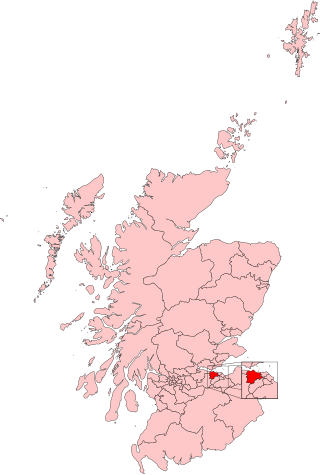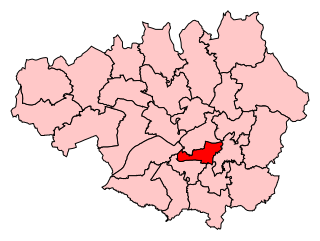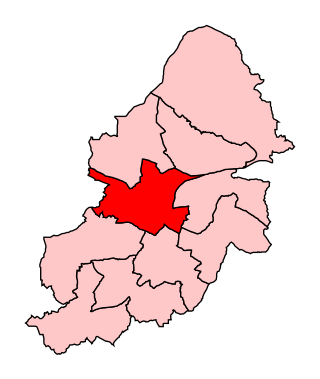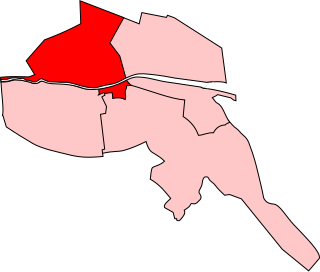Related Research Articles

Edinburgh West is a burgh constituency of the House of Commons of the Parliament of the United Kingdom, first contested at the 1885 general election.

Manchester Gorton is a constituency represented in the House of Commons of the UK Parliament by Labour's Afzal Khan, who was elected at the 2017 general election. It is the safest Labour seat in Greater Manchester by numerical majority and one of the safest in the country.

Birmingham Ladywood is a constituency of part of the city of Birmingham, represented in the House of Commons since 2010 by Shabana Mahmood of the Labour Party.

Hemel Hempstead is a constituency in Hertfordshire represented in the House of Commons of the Parliament of the United Kingdom. It elects one Member of Parliament (MP) by the first-past-the-post system. Since 2005, it has been represented by Mike Penning, a member of the Conservative Party.

College Green, a division of the parliamentary borough of Dublin, was a parliamentary constituency which returned one Member of Parliament (MP) to the House of Commons of the United Kingdom from 1885 until 1922. From 1918 to 1921, it was also used a constituency for Dáil Éireann

Hackney North was a parliamentary constituency in "The Metropolis". It returned one Member of Parliament (MP) to the House of Commons of the Parliament of the United Kingdom.
Birmingham East was a parliamentary constituency in the city of Birmingham, England. It returned one Member of Parliament (MP) to the House of Commons of the Parliament of the United Kingdom, elected by the first-past-the-post voting system.

Salford South was a parliamentary constituency in the City of Salford in Greater Manchester from 1885 until 1950. It returned one Member of Parliament (MP) to the House of Commons of the Parliament of the United Kingdom.
Hackney South was a parliamentary constituency in "The Metropolis". It was represented by nine Members of Parliament to the House of Commons of the Parliament of the United Kingdom, only two of whom, Horatio Bottomley and Herbert Morrison, were elected more than once.

Hampstead was a borough constituency, centered on the Hampstead area of North London. It returned one Member of Parliament (MP) to the House of Commons of the Parliament of the United Kingdom, who was elected using the first-past-the-post voting system.
Birmingham West was a parliamentary constituency represented in the House of Commons of the Parliament of the United Kingdom. It returned one Member of Parliament (MP), elected by the first-past-the-post voting system.
Battersea North was a parliamentary constituency in the Metropolitan Borough of Battersea, and then the London Borough of Wandsworth, in South London. It returned one Member of Parliament (MP) to the House of Commons of the Parliament of the United Kingdom, elected by the first-past-the-post voting system.
Battersea South was a parliamentary constituency, originally in the County of London and later in Greater London. It returned one Member of Parliament (MP) to the House of Commons of the UK Parliament.

Hitchin was a parliamentary constituency in Hertfordshire which returned one Member of Parliament (MP) to the House of Commons of the Parliament of the United Kingdom from 1885 until it was abolished for the 1983 general election.
Birmingham Small Heath was a parliamentary constituency centred on the Small Heath area of Birmingham. It returned one Member of Parliament (MP) to the House of Commons of the Parliament of the United Kingdom.

Brixton was a parliamentary constituency centred on the Brixton district of South London. It returned one Member of Parliament (MP) to the House of Commons of the Parliament of the United Kingdom, elected by the first-past-the-post system.

SouthwarkCentral was a borough constituency returning a single Member of Parliament to the House of Commons of the Parliament of the United Kingdom through the first past the post voting system. The constituency was a very compact and urban area, and was one of three divisions of the Parliamentary Borough of Southwark, which was identical to the Metropolitan Borough of Southwark, in South London. The creation of the constituency was recommended by the Boundary Commission in a report issued in 1917, and formally created by the Representation of the People Act 1918. It came into existence at the 1918 general election.
Birmingham Deritend was a constituency of the House of Commons of the Parliament of the United Kingdom from 1918 to 1950. It elected one Member of Parliament (MP) by the first-past-the-post system of election.
Birmingham King's Norton was a constituency of the House of Commons of the Parliament of the United Kingdom from 1918 to 1955. It elected one Member of Parliament (MP) by the first-past-the-post system of election.
Manchester Rusholme was a parliamentary constituency centred on the Rusholme district of Manchester. It returned one Member of Parliament (MP) to the House of Commons of the Parliament of the United Kingdom, elected by the first past the post system.
References
- ↑ Representation of the People Act 1918, Schedule 9
- ↑ Representation of the People Act 1948, Schedule 1
- 1 2 3 4 5 6 7 8 Craig, F.W.S., ed. (1969). British parliamentary election results 1918-1949 . Glasgow: Political Reference Publications. p. 82. ISBN 0-900178-01-9.
- ↑ Stevenson, Graham. "Moore Bernard". Archived from the original on 30 April 2017. Retrieved 30 April 2017.